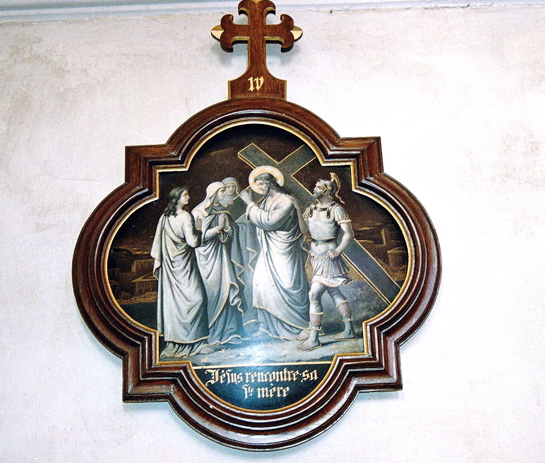
Today, I return to an old theme of this website – the New Age movement.
As I have said often here, I got caught up in the New Age, when both the movement and myself were very young.
Around 1979, age 15, I began to read of the Findhorn community in northern Scotland and first visited there in 1980. Later on, I spent the best part of three years living in the community.
Some readers may ask: What is Findhorn? Well, the Vatican document Jesus Christ – the Bearer of Life tell us:
The two centres which were the initial power-houses of the New Age, and to a certain extent still are, were the Garden community at Findhorn in North-East Scotland, and the Centre for the development of human potential at Esalen in Big Sur, California, in the United States of America.
In all, I spent nearly twenty years of my life defending and promoting New Age spirituality. Newcomers to this site can find many posts about this under the New Age and Findhorn labels (see the labels in the red footer at the bottom of this webpage).
But the main point I make today is that as a young New Ager, swept up by Findhorn from age fifteen onwards, I was so very, very unconscious.
I was unconscious that I was, in fact, making very profound decisions. In my observation, that is the case with the vast majority of New Agers.
And that is what I try to say in another little extract from my upcoming book:
New Age culture so often moves in lockstep with the modern, liberal culture.
And like that culture, the New Age movement has little time for Christian understandings of the Fall, evil and sin. It tends very much to share the secular supposition of ‘Original Innocence’.
Like the secular world, it considers tradition and authority passé now. Rather than being universal, its spirituality is bound to the modern and particularly Anglo-American West.
And just like that formerly Protestant culture, it excludes – reflexively – Catholic tradition from its ‘universal’ scope.
If we seek to guard the Catholic tradition, the growing New Age milieu demands something from us.
The task it demands is not aggressive arguments with New Agers. Rather, the primary work may be simply this: helping New Agers realise that they are making a decision.
Because New Agers are often entirely unconscious that they are making a very profound choice.
Believing in their universalism, they do not readily see the choice they have made. They do not readily see that they have chosen one particular spiritual approach – whilst utterly rejecting others.
Now, one can certainly choose the New Age, if one wants to. One can even lambaste other spiritual traditions with terms like ‘Old Age’ ‘Piscean’ ‘antiquated’ or ‘medieval’, if one wishes.
But one cannot then turn round and claim to be universal or holistic, in the sense of possessing an all-embracing outlook.
No, a decision has been made. It is a decision to say ‘yes’ to one thing and ‘no’ to another.
We all make such decisions. And we all include what we agree with.
And at the same time, we dis-include what we do not agree with.
Yet New Agers are frequently unconscious of having made any decision at all. They genuinely believe in their universalism.
Are the teachers of New Age spirituality more holistic and inclusive than the Pope? If I were to take a straw poll at Findhorn asking this question, I can safely guarantee that the Pope would lose by a wide margin! Indeed, I suspect one would need to poll hundreds, quite possibly thousands, of New Agers before the Holy Father would receive even a single yes vote …
But the New Age teacher is only inclusive in as much as he includes what he agrees with. And it is the same with Holy Father.
However, there is a difference with the Holy Father. For generally speaking, recent Popes are far more respectful of different religious traditions than New Agers generally are. Certainly, there are no recent Popes who criticise other religions the way New Agers criticise Christianity!
One may think of Bl. John Paul II in particular. Reading St. John Paul II, one finds far more respect for the sincere striving for God in other traditions than one generally sees with New Age teachers – who discard vast tracts of tradition as irrelevant. In this sense, Bl. John Paul II ought to be honoured as far more inclusive than a multitude of New Age authors.
Yes, the Catholic Mystery is increasingly buried by the idea that there is now a holistic option to replace all those intolerant and judgmental ‘old-age’ religions.
Of course, so-called ‘old age’ religion like Catholicism is intolerant of what it does judge to be morally evil. In my experience, the Catholic Church is far less tolerant than the New Age of unfettered global capitalism, for example.
Moreso than the New Age, the Catholic Church is intolerant of things one ought not to tolerate . . .
End of book extract.
I will just note that being back in Ireland, this beloved country, I feel ever more gravely concerned by the Anglo-Americanisation of this society.
For those who may be interested, there is another weblog entry here as to why the supposedly universal New Age is, above all, Anglo-American:
Bound in Time and Space: the “Universal” New Age
Foreword for Monarchy by Roger Buck
Buying Books at Amazon Through These Links Gives Us a Commission. This Supports Our Apostolate. Thank You if You Can Help Us Like This!





Comments
comments are currently closed
One response to “The New Age Decision: Saying Yes means Saying No …”
[…] And recently we observed at this weblog: […]